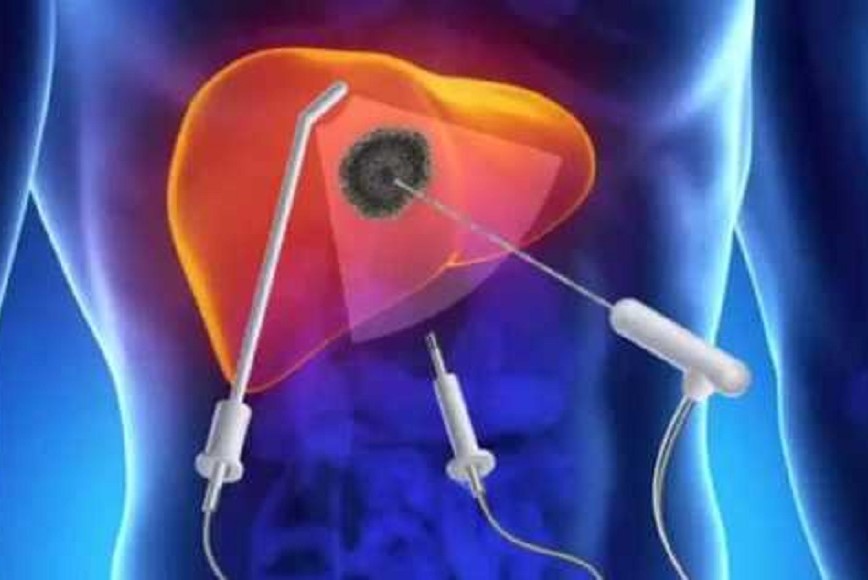
What is percutaneous thermoablation of tumours and how does it work?
Thermoablation is a minimally invasive method that is essential for treating tumours. Let’s find out more about exactly what it consists of
When talking about tumours, we are commonly used to associating this term with the word ‘surgery’.
However, there are numerous techniques and procedures for treating tumours, including percutaneous thermoablation.
Percutaneous thermoablation: what it is and what it consists of
Thermoablation is a technique for the treatment of cancer that exploits the ability of heat to produce necrosis, i.e. to destroy cancer cells, by subjecting the area inside the neoplasm and the surrounding area to temperatures far above the physiological 37°C of the human body (hyperthermia).
The word ‘percutaneous’, on the other hand, means performing the procedure minimally invasively through the skin, i.e. without surgical cuts, but only with small wounds.
It is a technique that has been perfected more and more since the 1990s, allowing for increasing precision and safety.
How thermoablation is performed
The patient generally undergoes local anaesthesia, but in cases where this is necessary, deep sedation can be performed.
Using ultrasound guidance, the doctor inserts a needle that reaches very high temperatures (up to 100° C) into the tumour, which causes the neoplastic cells to necrosis with intentional injury also to the blood vessels that nourish the tumour, which triggers inflammation that activates the immune system.
The procedure usually lasts 15-30 minutes and requires a hospital stay of 1-2 days.
The advantages of thermoablation
Thermoablation is a minimally invasive method that does not involve cuts or incisions and has the following advantages
- lower risk of complications related to infection and bleeding compared to surgery;
- reduced hospitalisation time;
- possibility of treating areas that are difficult to reach by surgery;
- it can be used on patients who cannot undergo surgery or general anaesthesia for various reasons;
- allows greater preservation of the tissues surrounding the tumour area.
What heat sources are needed for thermoablation
In order to perform thermoablation, energy sources capable of producing heat are required, which can be
- radiofrequency: the source mainly used. In this case, a high-frequency alternating current is generated, resulting in heat;
- microwaves: magnetic fields are created that raise the temperature;
- laser: an intense beam of light is obtained, emitted by very thin optical fibres passed through a narrow needle;
- ultrasound: high-intensity focused ultrasound is used that destroys cells through heat.
Which tumours can be treated with thermoablation
The benign or malignant tumours that can be treated with percutaneous thermoablation are those in:
- liver (the procedure originated precisely as a treatment for liver cancer, which is still one of the main diseases it is used on)
- bones;
- kidneys;
- lung;
- adrenal glands;
- breasts;
- head and neck;
- urinary apparatus;
- pancreas;
- central nervous system;
- endocrine glands;
- uterus.
This therapy, however, is reserved for neoplasms that usually do not exceed a maximum diameter of 5 cm and/or a small number of nodules.
Each case is assessed individually.
Percutaneous thermoablation is contraindicated in the case of:
- multiple lesions larger than 7
- lesions larger than 5 cm in diameter, in which case radicalisation, i.e. complete destruction of the tumour cells, is not guaranteed;
- coagulation problems or low platelet values, which cannot be corrected.
Cryoablation
A further technique that exploits the same principles as thermoablation, but uses cold to generate the destruction of tumour cells, is cryoablation.
By means of one or more probes (cryo-probes) inserted under radiological guidance (ultrasound, CT, MRI, fluoroscopy), directly inside the tumour, temperatures below -20°C are applied, causing tissue freezing followed by slow thawing, resulting in thermal shock and cell death.
Read Also:
Emergency Live Even More…Live: Download The New Free App Of Your Newspaper For IOS And Android
Lymphoma: 10 Alarm Bells Not To Be Underestimated
Non-Hodgkin’s Lymphoma: Symptoms, Diagnosis And Treatment Of A Heterogeneous Group Of Tumours
CAR-T: An Innovative Therapy For Lymphomas
What Is CAR-T And How Does CAR-T Work?
Brain Tumours: CAR-T Offers New Hope For Treating Inoperable Gliomas


